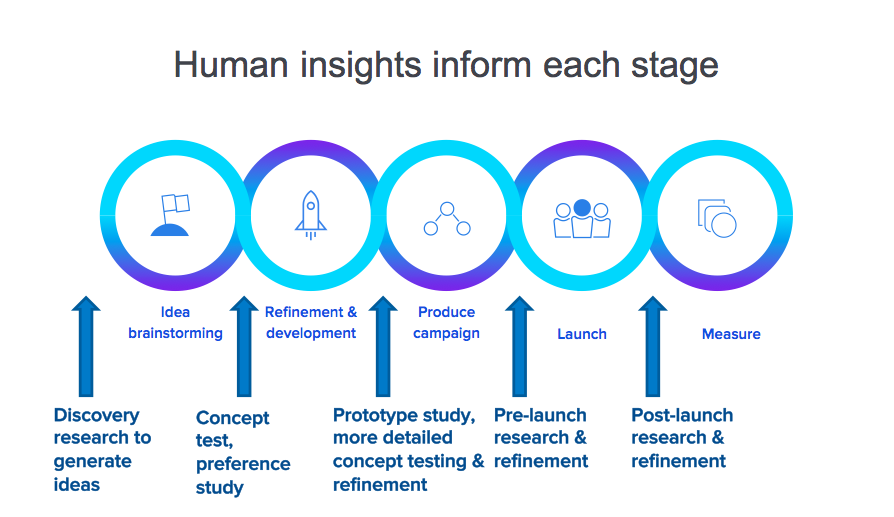
3 keys to using qualitative research in marketing campaigns

Today’s post is a summary of a talk recently given by UserTesting Research Manager, Liz Freeman, at CX Talks Atlanta. CX Talks is an organization that brings together CX professionals to share best practices and network.
Today’s marketers strive to be bold, authentic, emotional, and relevant to their customers. To achieve this, marketing campaigns cannot be created in a vacuum. Instead, marketers need to gather human insights to inform their decisions. Otherwise, they risk missing the mark.
Harvard Business Review published a study that explored the importance of emotions and their impact on marketing campaigns. They found that emotions were key to the adoption of a product. For example, when a major credit card company introduced a card that inspired emotional connections with Millennials, they saw use of the card by this segment increase by 70%, and new account growth rose by 40%.
So how do you know if what you’ve created is going to elicit these emotions? Relying solely on big data won’t work—it tells you who and what, but not why. This is where leveraging qualitative research becomes so valuable. It enables teams to better understand the human reaction that will result from a campaign.
To make this work, marketers need to be agile and be able to move quickly and easily. The market is constantly changing, so it makes sense for marketers to be prepared to change with it. Weaving human insights into the process will help marketers truly understand their customers at each point in the development of a campaign.
Putting ideas in front of customers and getting immediate feedback helps ensure the message is resonating—and allows time to pivot if it’s not. Teams that wait until after a campaign has already launched to see how people react risk wasted money and negative reactions.
You may remember Pepsi’s campaign featuring a group of people happily marching for some unknown cause (including Kendall Jenner). Within 48 hours the video had 1.6 million views—with five times as many downvotes as upvotes. Talk about bad publicity! It was described as “trash,” and both the world and media joked that it was “so awful that it united the internet.”
To avoid situations like this, teams can first gather real human insights to help them better understand how to create campaigns that strike the right cord with the right audiences.
But marketers need to move quickly, and their campaigns can’t afford to wait for lengthy focus groups or rely on the vagueness of a simple survey.
3 keys to gathering human insights in an agile marketing environment
The key to successful qualitative research that fits within an agile marking approach is threefold.
- Think small: Don’t try to understand everything there is to know all at once. Break it up, start with key objectives, iterate, then ask more questions.
- Be timely: Make sure the research is conducted when there is still time to use it. That means conducting research early and often so any potential issues can be flagged and addressed well before a campaign is launched.
- Empower everyone: Encourage everyone in your organization to continually listen to their customers. Everyone from the social media manager to the direct mail team should be listening to customers to understand what’s relevant to them.
Human insights inform decisions at every stage
By folding in human insights at each stage of the decision making processes, teams lower the risk of failure and increase the likelihood that campaigns will resonate with customers.

This may sound difficult to accomplish, however, today’s technology makes it easy. Remote, unmoderated customer interviews empower teams to put ideas, materials, and concepts directly in front of customers to help them make insight-driven decisions. Integrating insight collection into the campaign process helps marketers become more relevant and ensure that their campaigns resonate with customers.
Want to learn more?
To learn how UserTesting can help you understand your customers through on-demand human insights, contact us here.
In this Article

Get the guide
Get the guide


